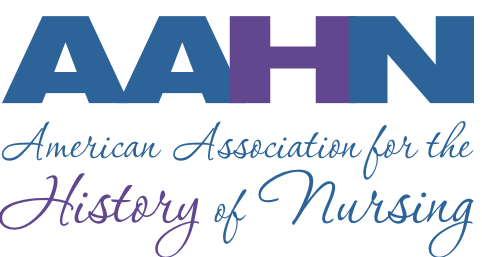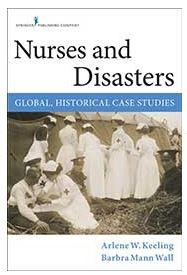- Home
- About AAHN
- Membership
- Research & Resources
- Publications
- Conference
- Members Only
- Contact Us
|
Nursing’s most important lesson from SARS in Toronto 2003 With the number of infections and deaths around the world rising in an exponential curve with COVID-19, it may seem that the 2003 story of SARS (SARS-CoV1), barely rates a mention. The total deaths in Toronto, the epicenter of the corona virus outbreak outside of Asia, was only 43. However, SARS provided a dress rehearsal for a twenty-first century pandemic and offers hard-learned lessons on preparedness and worker safety.[1] It’s message is critical for today. The first lesson of SARS was the now familiar message of slowing community transmission to enable the system to respond, both in terms of developing a cure or a vaccine (depending on the cause of the pandemic) and upholding the precautionary principle which urges a decisive and rapid response at the earliest possible stage. The second lesson speaks to what awaits us in North America – the issue of health worker safety when the system is overwhelmed. This is the lesson from SARS in Toronto that most directly affects nurses[2]. Despite the media heralding the heroism of nurses and their front line colleagues during the winter/spring of 2003, by summer the overwhelming response of the nursing profession had hardened to anger. It was clear from the way SARS had been effectively contained in Vancouver and other cities outside of China and Hong Kong that it could and should have been contained. Nurses in Toronto were painfully aware that the failure of the precautionary principle in Toronto that year was the result of an eight-year austerity program in the province characterized by deep budget cuts, hospital closures, nurse layoffs and widespread casualization. By the time SARS hit the city, the system had been depleted of most middle nursing management and casual contracts[AK1] for nurses were the order of the day. ERs and ICUs were already overflowing. As the submission from the Registered Nurses Association of Ontario (RNAO) stated to the Campbell Commission set up to investigate the province’s response to SARS, the problem was not the virus. SARS could not be contained because Ontario had “a system that was poorly connected; a public health sector that was under-resourced and disintegrated; a home care sector that was destabilized; a hospital sector that was unprepared for major emergencies; and a nursing workforce that battled dangerously low staffing levels, high workloads, and an over-reliance on part-time, casual and agency staff.”[3] This was the recipe for turning a moderately infectious new corona virus into a nosocomial emergency. When I taught the story of SARS just a few months ago to a class of NPs, many students only vaguely remembered it from their high school days. After reading Adrienne Byng and my chapter on SARS,[4] I encouraged students to talk to nurses who had worked in Toronto at that time. This exercise sparked interesting intergenerational discussions. Students reported back to their classmates the traumatic memories of their older colleagues and family members who recalled the confusion and the terrible sense of abandonment by their employers as they felt unsafe at work. They also recalled feeling abandoned, by the public as nurses became the victims of widespread fear and stigma. For example, nurses found themselves unable to travel on public transit without abuse if they wore any hospital identifiers, of being told to keep their children out of school (sometimes through anonymous letters), of their difficulties when quarantined in their own homes (however small), of the terror of infecting their families, and the distress of their children. In Toronto, medical staff were at times quarantined in hotels at the expense of the government or hospital while nothing was provided for nurses who arguably had fewer domestic resources. As the post SARS research all showed, the emotional toll on nurses was enormous. However, other students reported the opposite. They spoke with nurses who recalled feeling safe, well informed and supported by management and the wider community. This is the big lesson for us today: we need our front-line workers to be and feel safe. If we want to limit unnecessary deaths from COVID-19 we have to prevent the healthcare system from being overwhelmed. We have to ensure that nurses, doctors and other front-line health workers are fully supported to turn up each day and do their jobs. They need to be supported at work with the necessary equipment and information, assisted in getting to and from work, have access to food (this was a big problem in some hospitals!) and childcare. We need to ensure that nurses are provided with the resources and supports to self-isolate and self-quarantine while protecting their families. We are asking so much of our nurses, we should not be asking them to choose between their duty to care as nurses and the safety of their loved ones. [5] Nurses need to be listened to when they raise concerns – it was the nurses who overcame resistance to raise the alarm and have the second SARS outbreak declared. COVID-19 will be different in each hospital, city, and country. But we need to ensure that beyond the applause and the praise for heroes, the resources are in place to keep nurses and their families safe during this pandemic.
[1] Mario, A. Possami, SARS and Health Worker safety: Lessons for Influenza Pandemic Planning and Response, Healthcare Papers, 2007, 8(1) October 2007 : 18-28. doi:10.12927/hcpap.2007.19354 [2] The Honourable Justice Archie Campbell, “Spring of Fear”. Final Report of the Independent Commission to Investigate the Introduction and Spread of SARS in Ontario. (Toronto: Government of Ontario, 2006). [3] SARS Unmasked. Registered Nurses Association of Ontario. 29 September, 2003. https://rnao.ca/policy/reports/sars-unmasked [4] Sioban Nelson and Adrienne Byng, “Chapter 9: The SARS Pandemic in Toronto, Canada, 2003,” in Arlene Keeling and Barbra M. Wall, Nurses and Disasters: Global Historical Case Studies, (NYC: Springer Publishing, 2015): 229-255 [5] Ross Upshur, and Sioban Nelson, Duty of Care: Acknowledging Complexity and Uncertainty, Nursing Inquiry, 2008 14(4), 261-62. https://doi.org/10.1111/j.1440-1800.2008.00431.x
|

 *Sioban’s full text on this is in Chapter 9
*Sioban’s full text on this is in Chapter 9